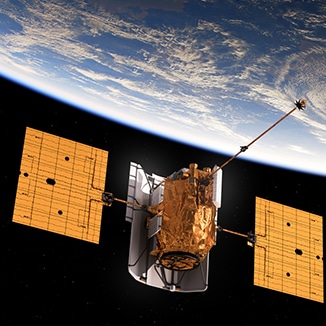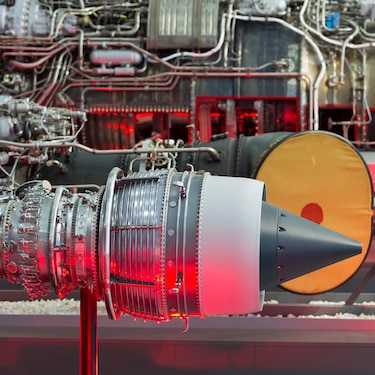The years 1961 and 2004 are two signature times in the history of space exploration. The first one is widely recognized. On May 25, 1961, President John F. Kennedy made a speech to a joint session of Congress that set the United States on a course to the moon. Within the decade, that intention was realized, which highly energized the American commitment to space exploration. Kids grew up wanting to be astronauts. NASA became a household name. There was a clear interest, among the people as well as the government, in exploring the cosmos.
As time passed, interest fatigued. The end of the cold war and collapse of the Soviet Union diminished the competitive drive that in part fueled the passion for space exploration, and the financial commitment began to lag. In 1966, NASA’s budget was 4.4 percent of the federal budget. Since 1993, that share has never exceeded 1 percent.
According to an article posted on Penn Wharton’s Public Policy Initiative website, the real dollars spent by NASA at the height of the space race came to $44 billion. In recent years, the agency has seen its annual budget hover around the $18-billion-dollar level. Despite such notable projects as the Space Shuttle program, Hubble telescope, and the International Space Station, it’s fair to say the sector lost considerable momentum as we reached the end of the last century.
However, that momentum is again on the rise. Many believe the current revival of enthusiasm for space exploration can be dated to 2004, when the Commercial Space Launch Amendments Act opened up prior limitations on space travel, effectively channeling private resources to reinvigorate the exploration of space. A host of private companies are the new players in this endeavor, names such as SpaceX, Orbital ATK, Virgin Galactic, Sierra Nevada, Blue Origin, XCOR and Stratolaunch. Their emergence has solidified the emergence of privatized space exploration.
New Space Means Privatized Space Exploration
The Washington Post couches these new ventures as “New Space,” dreamers and visionaries whose approach to exploration contrasts with “Old Space,” dominated by NASA and its traditional Fortune 500 suppliers. According to the New Space adherents, “Old Space coasts on the glory of the Apollo era and isn’t entirely sure what to do next. New Space is the opposite of all that. It’s wild, bootstrapping, [and] imaginative.”
There are advocates for both sides. Old Space points to its history of accomplishments and the fact that the newcomers are in the nascent stage of development with business models but no spaceships launched successfully. New Space advocates laud their cost efficiencies over established players, as well as their ability to drive technology unencumbered by the conservative, top-down approach of Old Space development. The Washington Post describes these camps as having a symbiotic relationship: “New Space companies need NASA contracts, and NASA needs New Space companies to pick up the agency’s slack.”
Penn Wharton cites recent developments that support that assertion:
“To fill the void left by discontinued NASA programs, many private companies have received commissions from NASA to perform important functions. For instance, in place of the Space Shuttle program, NASA has formed Commercial Resupply Services contracts with commercial space companies SpaceX and Orbital ATK to deliver cargo to resupply the International Space Station. While American astronauts currently have to borrow a ride from the Russian vehicle Soyuz to reach the ISS, NASA is working on the Commercial Crew Program in conjunction with SpaceX and Boeing to develop spacecraft that can carry astronauts to low-Earth orbit and the ISS.”
The private sector is assuming immediate responsibilities in supporting ongoing space exploration while continuing to pursue higher-profile objectives such as making space tourism a viable business—or going to Mars.
Privatized Space Exploration Offers New Hope for Humanity
Indeed, a post on the Huffington Post blog extols the potential of private sector involvement in space exploration, saying it offers “a new hope for humanity.” Among the futuristic benefits the author cites are clear energy and resource preservation through asteroid mining, protection of the planet from wayward asteroids through the development of Asteroid Impact Avoidance technologies, and even colonization (Mars again) as a means of protecting the species.
While these benefits are admittedly forward looking, the emergence of New Space enterprises is having an immediate economic impact, as communities surrounding the new ventures are counteracting the thousands of jobs lost through NASA budget cuts. Some have touted the area around the Mojave Air and Space Port as “the new Silicon Valley,” indicating the vast potential of privatized space exploration. What is clear is that a whole new area of opportunity is being opened up rapidly, revitalizing the spirit that launched space exploration more than 50 years ago, and promising strong economic growth in this critically important sector.
New Space and Old Space Come Together at Space Tech Expo USA
On May 23- 25, 2017 the space industry (new and old) will be gathering at the Pasadena Convention Center for Space Tech Expo USA. This event brings together thought leaders, decision-makers and buyers to meet the manufacturing supply chain for commercial, civil, and military space and aerospace. There’s no better place to get a pulse on what’s happening in space exploration from a technological and manufacturing perspective.
iBase-t will be exhibiting at the show. We invite you to visit with us at Booth #2029. iBase-t is the leading provider of software solutions for complex, highly regulated manufacturing industries. Our Solumina software solutions streamline and integrate Manufacturing Execution Systems and Operations Management (MES/MOM), Maintenance, Repair, and Overhaul (MRO), Enterprise Quality Management Systems (EQMS) and Supplier Quality Management (SQM) across the manufacturing value chain. We welcome the opportunity to show you how our software is helping those involved in today’s space exploration reach new heights of performance.






